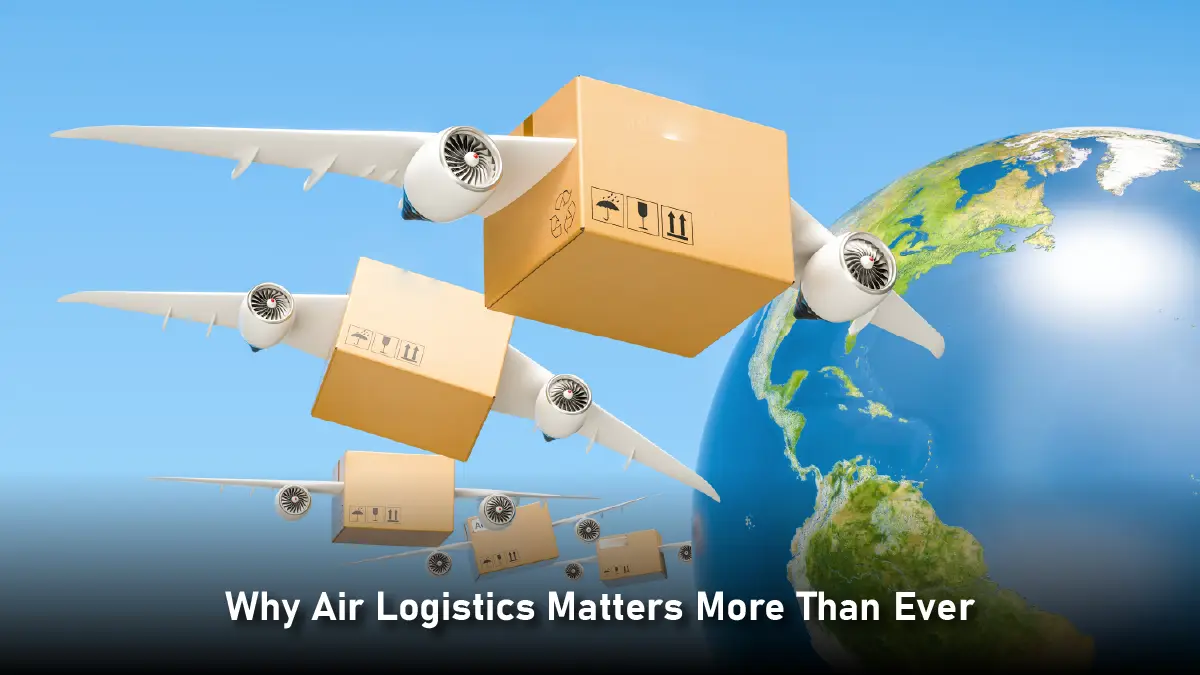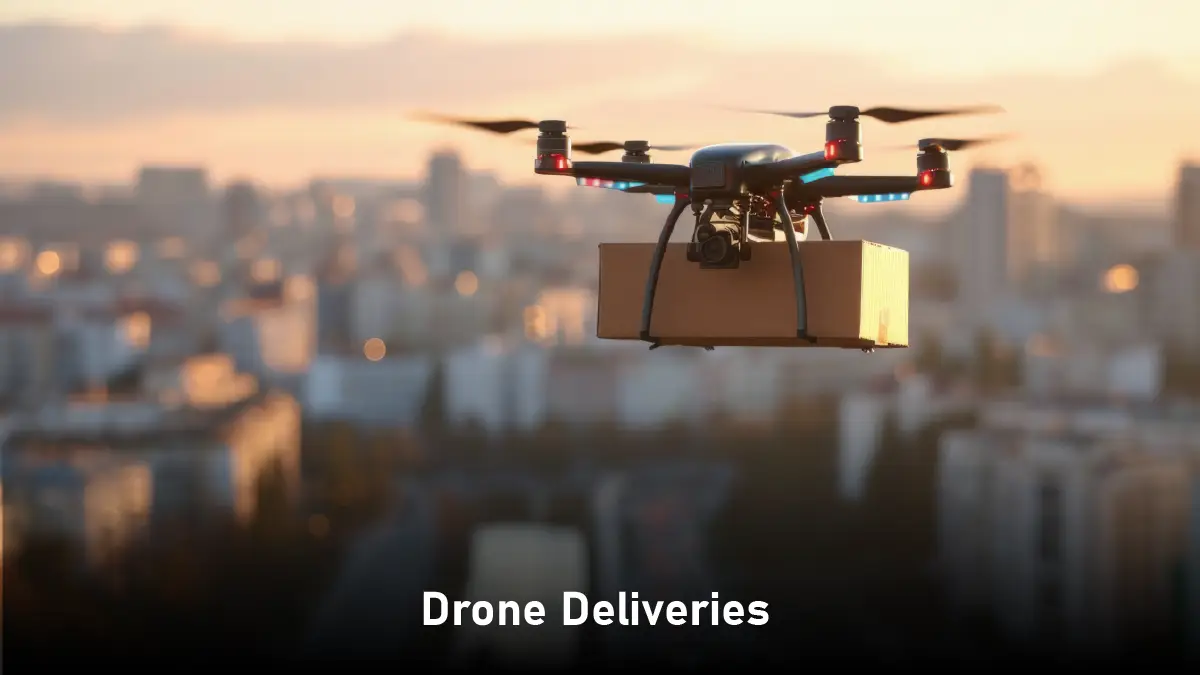In today’s world of online shopping, speed is everything. Customers don’t just want convenience, they expect it. If it’s not delivered in 2 days, they’ll go elsewhere. And if you can offer same day or next day delivery? Even better. Faster delivery is in high demand due to the rise of online shopping and air logistics is key to meeting customer expectations. In 2022 alone, over 170 billion packages were shipped worldwide; by 2027 that number will be 50% more. Air cargo handles 80% of cross border e-commerce today. Companies are turning to one solution to meet this demand: air logistics. Let’s dive in and see how this fast paced system is changing eCommerce as we know it.
The eCommerce Boom and the Speed Factor
eCommerce has grown exponentially in the last decade. What was once a slower, mail-order like experience has turned into a fast paced digital marketplace. From groceries to gadgets, everything is now just a click away.
But as online shopping became more popular, customer expectations changed. Free shipping used to be the key selling point. Now, speed is the name of the game.
- 70% of online shoppers say fast shipping is a deciding factor.
- More than half abandon their carts if delivery estimates are too long.
- Same day delivery is becoming a major competitive advantage.
That’s where air logistics comes in.
What Exactly is Air Logistics?
Air logistics refers to the use of air transport for moving goods. It includes everything from the moment an item is packed to the time it arrives at your door.
It’s not just about airplanes. Air logistics also involves:
- Warehousing and order processing
- Loading and unloading
- Customs and regulatory checks
- Ground handling at airports
- Final-mile delivery coordination
This system is built for speed. And when done right, it can cut delivery times from days to hours.
Why Air Logistics Matters More Than Ever

Let’s break down why air logistics is becoming essential for eCommerce businesses around the world.
● Long Distance Shipping
Not all customers live near a fulfillment center. Not all businesses can afford to build warehouses in every region. Air logistics solves this problem. Air freight allows products to travel thousands of miles in a matter of hours. So companies are able to ship orders across continents without needing to keep inventory in every marketplace. For instance, a Londoner ordering a phone case from a Singaporean seller could receive it in 2-3 days if air freight is employed. For example, a customer in London ordering a phone case from a seller in Singapore might get it in 2-3 days if air freight is used. That’s a big improvement from 10-15 days by sea or road.
Also Read: What Is Stationary Power Generation? A Complete Overview for Energy Tech Leaders
● High Value and Time Sensitive Goods
Certain products must move quickly, consider perishables, electronics, fashion or health items. These types of products lose their value with time or cannot be warehoused for a long period of time. Air logistics is a secure option to deliver them to the market quickly, particularly in busy periods such as holidays or flash sales.
● Smaller but More Frequent Orders
In the past, businesses shipped in bulk to save costs. Today with flexible manufacturing and lean inventory practices, businesses ship smaller packages more often.
The ‘ship-as-you-sell’ model fits perfectly with air logistics. Businesses can be responsive to demand without holding massive stockpiles.
● Global Expansion Made Easy
Air logistics extends the boundary of global eCommerce. A tiny seller based in Tokyo can reach consumers in New York, Berlin, or Dubai without establishing foreign warehouses. Air freight enables companies to penetrate new markets quickly, pilot demand and grow only when necessary. Air freight allows businesses to enter new markets fast, test demand, and scale up only when needed. It’s a cost effective way to go global without huge upfront investments.
How eCommerce Giants Are Using Air Logistics
Let’s look at how some of the biggest players in the game are leveraging air logistics to stay ahead.
● Amazon: Building an Air Empire
Amazon has its own air cargo fleet, Amazon Air. Over 100 aircraft and growing, it connects fulfillment centers to major markets across the US. Amazon’s air network enables one-day delivery on millions of items. It gives them control over timing, routing, and tracking. They even have their own airport hub in Kentucky to streamline air ops.
● Alibaba: Expanding Through Cainiao
Alibaba, China’s eCommerce giant, uses its logistics arm, Cainiao, to deliver fast, global. Cainiao partners with airlines and local couriers to get parcels to buyers across Asia, Europe and the Americas in record time. They have launched ‘5-day global delivery programs for key markets, showing how air logistics supports cross-border trade.
● FedEx, UPS, DHL: The Backbone
Traditional air logistics providers FedEx, UPS, DHL have also adapted to eCommerce. They’ve added more planes, improved digital tracking, and faster customs clearance. They work closely with online retailers, marketplaces and brands to handle air shipping from start to finish.
The Role of Technology in Air Logistics
Air logistics wouldn’t be this fast or efficient without technology. Let’s explore some key innovations that are improving the process.
Real-Time Tracking
Customers love updates. Technology now allows for real-time package tracking, from the warehouse to the aircraft, to the final destination. It boosts transparency and gives shoppers confidence in the process.
AI and Automation
Artificial intelligence is helping optimize routes, predict delays, and balance demand. Automated sorting, loading, and unloading also speed up operations at air cargo terminals.
Digital Customs Clearance
Manual paperwork used to delay international shipping. Now, digital customs platforms allow faster processing by sharing shipment details ahead of time. Some governments even support automated pre-clearance for trusted traders, shaving hours off delivery timelines.
E-commerce’s Contribution to the Growth of Air Logistics
● The Impact of E-Commerce on Air Cargo Volumes
Air freight numbers have been hit hard by e-commerce, which has changed the logistics industry. An unprecedented amount of parcel shipping has been driven by the e-commerce boom. 170 billion e-commerce packages were shipped worldwide in 2022, and by 202,7 that number will increase by 50%. Air cargo is key to meeting the growing need for fast and reliable delivery in e-commerce as this growth shows.
The demand for air logistics has increased because consumers want instant gratification. Today almost a third of all air freight is from e-commerce, and that number will remain steady for the next few years. This trend shows how important air travel is to e-commerce companies’ logistical needs.
The pandemic also accelerated e-commerce adoption, which led to a big surge in air cargo volume. E-commerce made up 15% of all air freight volume before the pandemic. This number has increased significantly in the modern era, which shows how the industry has adapted to the changing market. Air cargo rates have also been affected by e-commerce demand as companies value efficiency and speed more than price.
● The Impact of Cross-Border E-commerce on Air Freight Demand
Cross border e-commerce is driving air freight demand. Consumers are looking for products from international markets; hence, they need global shipping solutions. Air cargo plays a key role in this demand, transporting around 80% of cross border e-commerce goods. This reliance on air transport means businesses can meet customer expectations for on time delivery.
Cross border e-commerce has also led to a modal shift from ocean to air. Longer ocean voyages and limited vessel space have forced businesses to opt for air freight despite higher costs. This has led to increased air cargo volumes and proved the industry can adapt to changing market conditions.
And with e-commerce sales projected to reach US$ 6.3 trillion by 2024, air cargo will continue to be relied upon. As international trade grows, air freight will be the backbone of cross border e-commerce logistics. The industry’s ability to handle this growth will determine if it can support the global e-commerce ecosystem.
Challenges in Air Logistics
Air logistics is fast and powerful, but not without its challenges.
● Cost
Air freight is expensive than road or sea. It’s for high value, lightweight, or urgent goods. For bulk or low margin products, it’s not cost effective.
● Capacity
Aircraft have limited cargo space compared to ships or trucks. During peak season or emergencies (like the COVID-19 pandemic), air capacity gets tight and prices go up.
● Environmental Impact
Air transport has a higher carbon footprint than other modes. As sustainability becomes more important, companies are being forced to balance speed with environmental impact. Some are looking at carbon offsets or biofuels to make air logistics greener.
● Airport Bottlenecks
Busy airports can slow things down. Delays in customs, weather issues or limited cargo handling can disrupt tight delivery timelines. Efficient ground operations and tech upgrades will solve this.
The Future of Air Logistics in eCommerce
What’s next for air logistics? A lot!
Drone Deliveries

Companies like Zipline, Amazon Prime Air, and Wing (by Alphabet) are testing drone delivery systems. These small aircraft can bypass traffic and deliver to customers’ doorsteps in minutes. They’re perfect for rural areas, medical supplies, or high priority goods.
Electric Aircraft
Startups are developing electric cargo planes for short haul routes. These will have lower emissions, lower fuel costs, and quieter operations. This will change regional air logistics in the next few years.
AI Powered Logistics Hubs
Smart hubs with AI will manage inventory, sort packages, and assign flights in real time. This will reduce delays and increase reliability. Some logistics centers already use robotic arms and autonomous vehicles to handle cargo faster and safer.
Cross Border eCommerce Platforms
We’ll see more platforms for international eCommerce. These will offer air logistics services with currency conversion, language support, and customs automation. It will make it even easier for small businesses to go global.
To Conclude
Air logistics is transforming e-commerce from checkout to takeoff. It pushes the limits of convenience, links customers and sellers globally, and delivers goods faster than ever. It means staying ahead of the competition for businesses. Customers will benefit from additional options and shorter wait times. Additionally, it promises additional connections and greater chances for the global economy. The future of air logistics is bright, intelligent, and full of opportunities, but there is still work to be done in the areas of cost, capacity, and sustainability.




